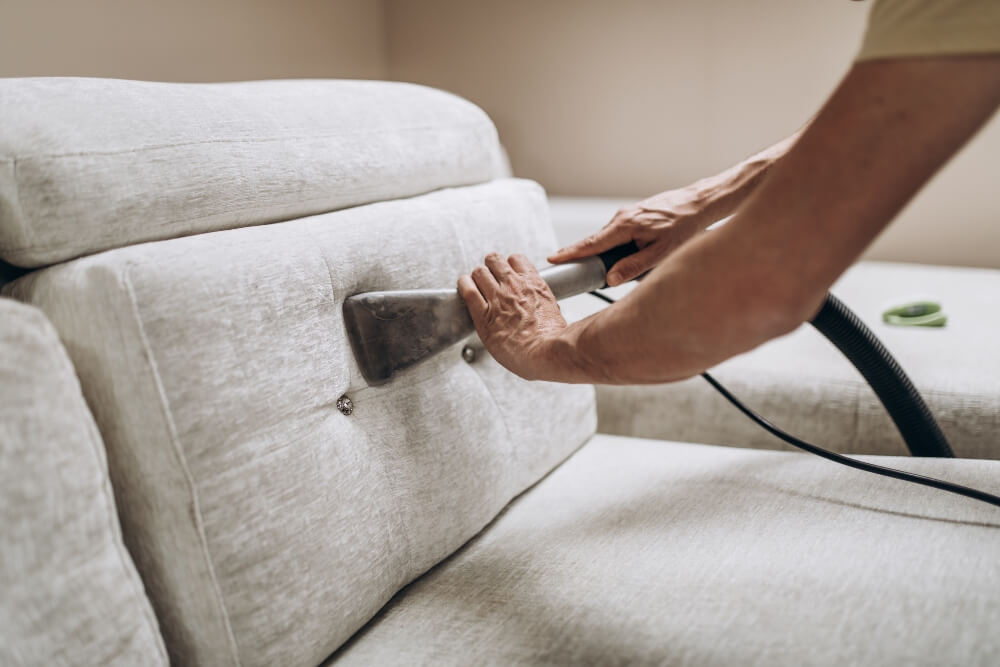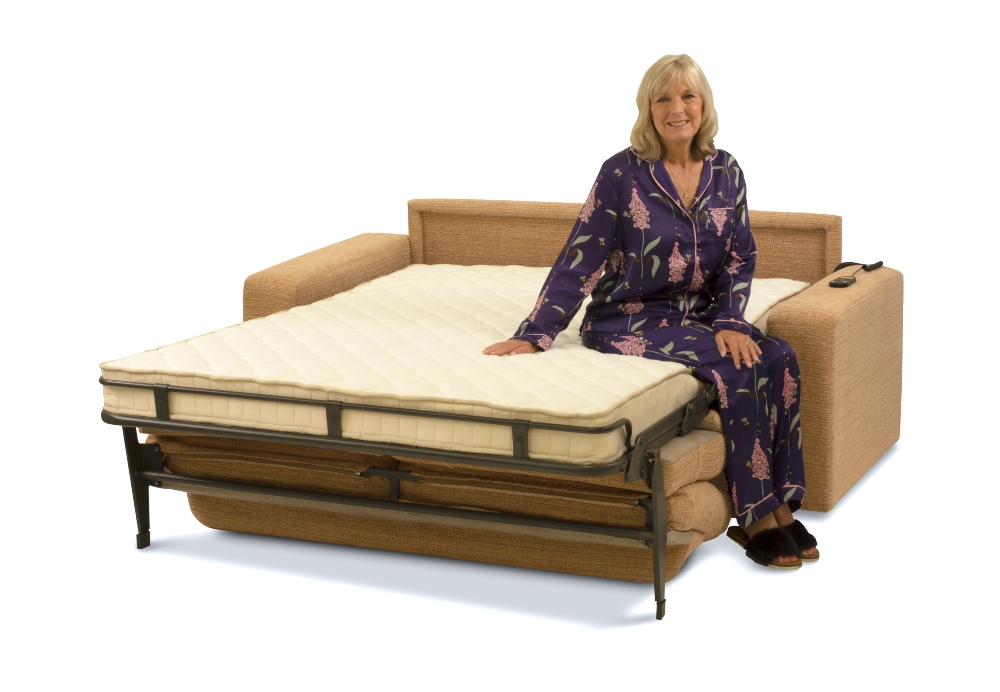How to Clean a Recliner Chair
Social Links
Choosing the right recliner chair can bring hours of supreme comfort and luxury, and a well-tailored product should provide good support for many years. Once you’ve decided on your style of chair, you can have fun choosing your colours, patterns and accessories – and just as your chair should suit your needs and lifestyle, so should your choice of upholstery.
Everyday use can lead to things like dirt, food and drink spills and pet hair building up, so it’s important to clean your rise recliner chair or sofa regularly. How you clean it and what products you use will depend on the material, and some recliners may come with limited fabric choices, so you should take this into account when deciding on your final product.
General advice for cleaning recliner chairs and sofas
It’s good practice to deep clean your chair with a steam cleaner at least twice a year and give it a lighter clean once a week. Deal with stains straight away, and blot rather than rub. Apply any products to the cloth first, never directly onto the fabric, unless the product instructions tell you to.
Before cleaning a chair, wipe it with a microfibre cloth or ideally vacuum it with a brush attachment to remove any loose debris. Always look at the care manual or tag before you start to determine whether there are any methods or cleaners you can’t use, as these may cause irreparable damage. After cleaning, always make sure your chair is completely dry before using it.
How to clean a cloth or fabric recliner
When you are ready to clean your chair, contact our office who will carefully check the fabric’s instructions and give you precise pointers. It’s all part of the service at The Mobility Furniture Company.
What products you use on a cloth or fabric recliner will depend on whether your material is solvent-safe or requires water-based cleaners only.
Artificial fabrics such as polyester, nylon and acetate tend to be water only, while natural fibres such as cotton, linen and velour can generally tolerate solvents. Once you’ve given your chair a vacuum or wipe to remove dirt, dust and crumbs, follow these steps based on your product’s care instructions:
Cleaning a water-safe upholstered recliner
Step 1:
Fill a bucket with warm water and add one to two tablespoons of liquid soap or mild laundry detergent.
Step 2:
Wet a cloth from the bucket and wring out the excess water. Wipe the upholstery thoroughly and scrub out any stains or spots with a brush.
Step 3:
Give the cloth a clean rinse and wipe off any residual soap.
Step 4:
Absorb any excess water with a towel, then allow the chair to air-dry.
Cleaning a solvent-safe upholstered recliner
Step 1:
Spray the recliner with a solvent-based upholstery cleaner. Allow it to sit for the recommended time.
Step 2:
Use a stiff-bristled brush to scrub the recliner, removing any stains or embedded dirt. Wipe away the excess with a damp cloth.
How to clean a soft leather recliner
There are many cleaning products available to clean leather recliners, however it’s easy to make your own if you prefer. Use a soap with a mild pH balance or make up a solution of equal parts water and white vinegar. Always test a small, inconspicuous area first to ensure it doesn’t leave marks or cause discolouration.
Step 1:
Use a soft damp cloth to rub the solution gently but firmly onto the chair and allow to dry.
Step 2:
Use another dry cloth to buff and polish the surface and remove most of the product. There’s no need to rinse.
Step 3:
Treat your chair with a leather conditioner or wax once or twice a year to keep it supple and protect it from drying out or cracking.
How to clean a faux leather chair
Faux leathers are synthetic materials such as PVC, polyurethane or polyamide microfibre, which are backed with a softer fabric and then embossed with a grain to resemble leather. As with leathers, faux leather is best cleaned with a mild soap or detergent and should be spot tested first.
Step 1:
Make your solution with warm water, then use a soft cloth to wipe it over your chair.
Step 2:
Dry it off with another soft cloth – there’s no need to rinse.
Step 3:
Treat it regularly with a protective treatment – this adds a thin protective later which repels stains and makes it easier to clean. Faux leather can also dry out in direct sunlight, so protect it when you’re not using it by throwing on a cover or closing the curtains.
How to clean the headrest on a recliner chair
Some parts of the chair, such as the headrest and arms, are more susceptible to stains due to oil and product residue from the skin, head and hair. Protect these areas with washable covers, or if your chair is leather or faux leather you can apply a protective treatment.
If you do need to clean your headrest, use the same method you would for the rest of the chair and be sure to follow any instructions on the label. If your chair becomes badly stained with oil or grease, it may need to be professionally cleaned.
The bottom line
Cleaning your recliner is an important part of keeping it in good condition, and it’s important to use the method most appropriate to your fabric to avoid causing damage or weakening the upholstery. Protective sprays and treatments can protect it against spills and stains, or you might prefer a washable throw or seat cover.
Even with a protective layer, your chair should be wiped down regularly, deep cleaned at least twice a year and any stains removed immediately. This not only makes the cleaning easier but will ensure your recliner chair stays in top condition for you to enjoy for many years to come.
If you have any questions about maintaining your chair, you can always get in touch and we’ll endeavour to help.
*This website contains general medical information. The medical information is not advice and should not be treated as such. Read our full Medical Disclaimer here.



